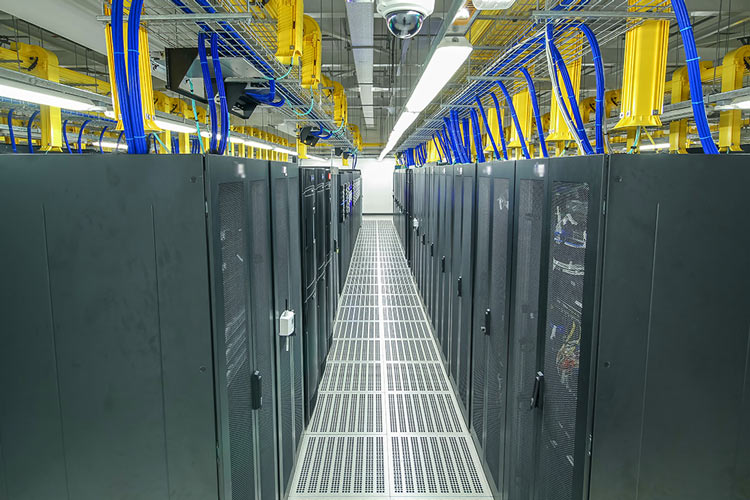Nearly every business depends upon the internet for essential business procedures. Performance and downtime gaps symbolize reduced sales and productivity along with reputation, mitigation, and other expenses. The actual price of tech bugs and out-of-date technology can result in the loss of millions. For this reason, a huge and developing amount of businesses make a small-scale investiture in promoting their business framework into an architecture grounded on server clusters.
What is server clustering and how does it work?
Server clusters are merged collections of servers, managed and distributed under one IP address, which works as a single unit to assure maximum accessibility, system scalability, and sound load balancing. Every server is connected to its CPU to process resources, RAM for memory, and storage (hard drive) to command. For example, a two-node cluster showcases that in case of server 1 breaks up, the other will instantly take over. In ideal situations, to affirm hardware redundancy, multiple websites and application nodes are used. This form of architecture is named as the maximum availability cluster, precludes the delay if failure of any component occurs. This is particularly genuine if the Operating system breaks down in a single-standing server showing no redundancy. Consumers will not even realize the crashing of the server.
Additionally, two general forms of server clusters have been launched – automatic and manual.
- Manual clusters are not considered the best solution, as when a node is manually configured to a single IP address, it comes with a time delay. Even a small downtime of 2-5 minutes could be crucial for an organization.
- Then again, an automatic switching takes place as an upshot to formerly configured software to execute the switching procedure when we use automatic clusters.
What are the reasons for placing server clusters?
Server clusters are mostly used by businesses to keep off the delay and sustain system availability, even in the situation of a critical hardware failure. For several companies experiencing operation degradation, breaking the database server can modify quick and uninterrupted functioning for heavy workloads.
Different kinds of server clusters
Server clusters are available in 4 forms; each fulfills different business goals and infrastructure requirements.
1. Load Balancing Clusters
Load balancing clusters are like a server club where user requests are distributed to various active nodes to assure redundancy, accelerate executions, minimize overloading and network over-loading, and amend workload division. Load balancing is extremely crucial for server clusters.
The load balancing software manages requests; it takes them to several servers, harmonizing a set of algorithms or rules, and then manages the surpassing reaction. Load balancing permits separate functioning and division of load among servers to make the most of availability and utilization of the resources.
Entire availability clusters, like, deploying a load balancer in a state of point-point (A-A) configuration to reply to multiple requests and then pass them out to single servers. Workload dispersion, it this situation, can be symmetrical or asymmetrical, based on the computer performance and configurations. In a high availability cluster (active-passive), the nodes’ accessibility is monitored by the load balancer, so when one closes, it doesn’t broadcast any more signal to it till it is wholly functional again.
Load balancing framework also permits the use of different connections in one time, an attribute that is very beneficial in infrastructure with superfluous conveying of information. This kind of architecture is deployed hugely by data centers and telecom companies to minimize the expense and accomplish maximum availability and scalability by optimizing high-bandwidth data transfers.
2. Clustered Storage
It is made of dual storage servers to node space I/O, scale performance, and reliability. Based on storage demands and business requirements, clustered storage is distributed in a securely fixed network, channelized at main storage with data divided into very little bars roughly paired architecture or nodes that are equanimous, yield high flexibility, and data is not stored across nodes. In a roughly paired architecture, capacity and performance are confined to the potentialities of the node stashing away the information. Dissimilar to the fastened architecture, new nodes’ scalability is not an option.
3. High Availability Server Clusters
High availability clusters are the most desirable option for high traffic websites like online apps or online shops to assure that critical systems work properly and are reliable for continuous and optimal functioning. High accessibility clusters deflect individual spots-of-breakdown, as they are ramped up on redundant software with the hardware. They are very important for system backups, load balancing, and switching, which fuse to provide complete accessibility and assure website functioning with no intervals.
Incorporated with several hosts ready to take control in a situation of server closures, these clusters assure minimal downtime in case of server failure or overload.
High availability clusters showcase two separate architectures; Active to active and active to passive. In an A-A cluster, every node executes its functions at the same time to equalize loads. On the other side, in an (A-P) architecture, all workload is handled by the primary node, and the other waits to take control of the situation of downtime. When one part smashes, the hot standby or hot spare (secondary server), instantly handles, because the info from the main server has been duplicated to other nodes before time. It’s a small-price execution in comparison to A-A.
High availability clusters guarantee seamless scalability, dependability, better maintenance, and rich infrastructure security. An amended website experience will not benefit the users, but these clusters will also assist in saving costs by decreased downtime.
4. High-Performance Cluster
Comprised of multiple computers interlinked to a similar network to execute different tasks is called a high-performance cluster. Data storage clusters join these clusters, and unitedly they build a complicated network that can litigate data very quickly. Networking and storage elements have to sustain with each other for speedy data transfer and unlined performance.
Also named supercomputers, they are used in industries that work with resource-intensity workloads to enhance reliability, capability, and performance. They are hugely utilized with AI technology and IoT because they ease up creativity for projects like storm prediction, live streaming, real-time data execution, and patient diagnosis. These clusters are used in research labs, in the finance industry, and media and entertainment industry.
Businesses should invest in server clusters to save money. Hardware failures, website failures, and application failures will be managed in a clustered environment, and engineering efforts will also be saved, resulting in reduced cost of system recovery. One more reason to invest in the server cluster is uptime and hardware redundancy resulting in a fast response and high availability to the customers.
Ready to See How Volico Data Center Can Help You?
Got questions? Want to talk specifics? That’s what we’re here for.
Have one of our friendly experts contact you to begin the conversation. Discover how Volico can help you with your Managed Hosting Services needs.
• Call: 888 865 4261
• Chat with a member of our team to discuss which solution best fits your needs.











